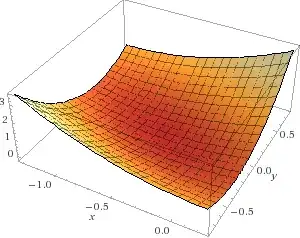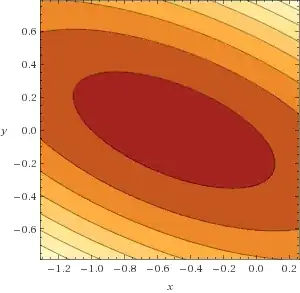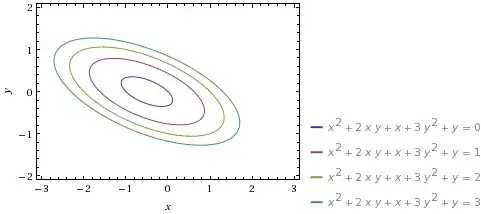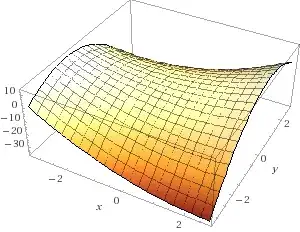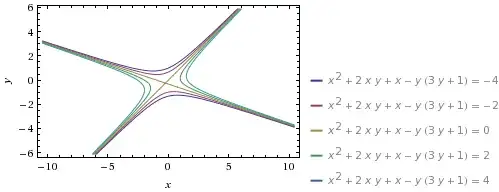If we are given a curve in the form $$ax^2+2bxy+cy^2+2dx+2ey+f=0$$ and the following determinant $$\delta=\begin{vmatrix}a&b\\b&c\end{vmatrix}=ac-b^2$$ is non-zero, then this is either a curve of elliptic type (an ellipse, a point or an empty set/an imaginary ellipse) or a curve of hyperbolic type (a hyperbola or a pair of lines). So in these cases in makes sense to talk about center of the curve, i.e., the point with respect to which this curve is symmetric.
The center can be found as the solution of the following system of equations $$\begin{align*} ax+by+d&=0,\\ bx+cy+e&=0. \end{align*}$$ (This system has a unique solution, since the determinant of the matrix of this system is $\delta\ne0$.)
That means, the coordinates of the center can be computed as $$\begin{align*} x&=\frac{be-cd}\delta,\\ y&=\frac{bd-ae}\delta. \end{align*}$$
Several resources can be found where this way of finding center is described. (Often in the form of solving $\frac{\partial F}{\partial x}= \frac{\partial F}{\partial y} =0$, where $F(x,y)=ax^2+2bxy+cy^2+2dx+2ey+f$.)
How can these conditions for the center be derived? How can we show that the point fulfilling these equation indeed is the center of the conic section?
